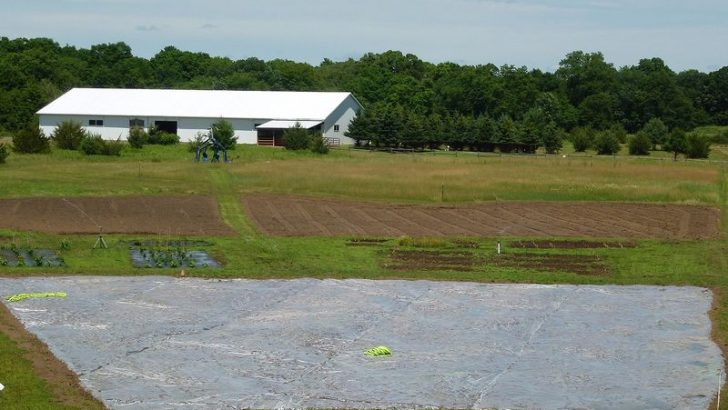Maintaining a pristine driveway and walkway can be a challenging task, especially when faced with stubborn weeds. These unwanted plants not only mar the appearance of your property but can also cause structural damage over time. In this article, we explore twelve effective methods to rid your outdoor spaces of weeds, ensuring a clean and attractive environment.
1. Boiling Water
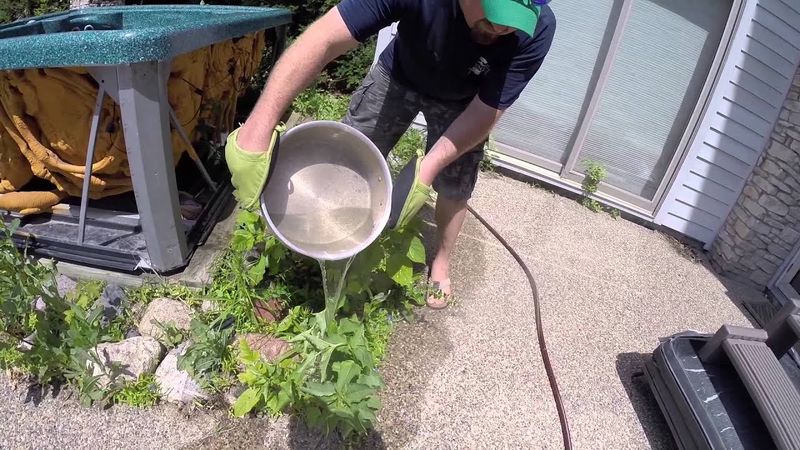
Pouring boiling water directly onto weeds is an easy and effective way to eliminate them. The intense heat of the water causes the plant cells to burst, killing the weed. This method is ideal for small areas or isolated weeds. It’s a natural, chemical-free solution, making it safe for pets and children. However, care must be taken to avoid scalding yourself or damaging nearby plants. Repeated applications may be necessary for particularly stubborn weeds. It’s a quick fix but may not be suitable for larger areas.
2. Vinegar Solution
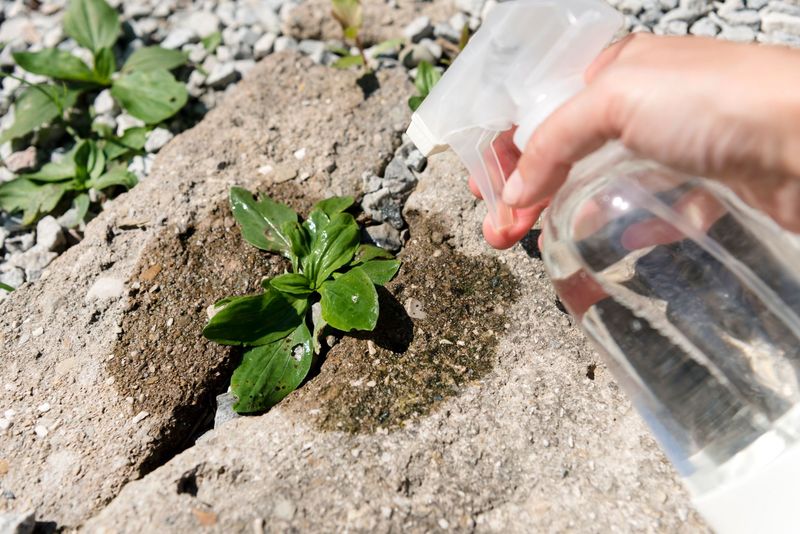
Using vinegar as a weed killer is a popular natural remedy. The acetic acid in vinegar draws moisture from the weeds, causing them to wither and die. This solution works best on sunny days, enhancing the vinegar’s effectiveness. Simply fill a spray bottle with white vinegar and apply directly to the weeds. Avoid contact with desired plants as vinegar is non-selective. Reapplication may be needed for persistent weeds. Vinegar is an eco-friendly alternative to chemical herbicides.
3. Salt Treatment
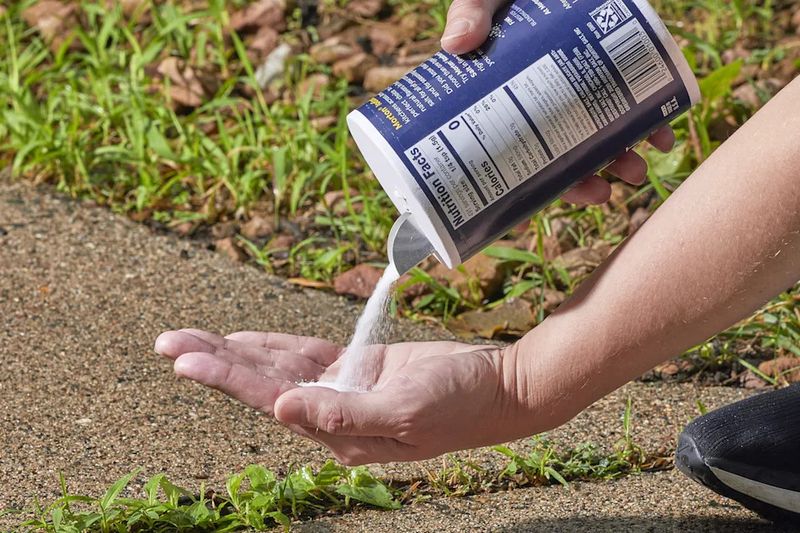
Salt can be used to dehydrate and kill weeds. By sprinkling salt directly onto the foliage or along the base of the weed, you disrupt its growth. This method is cost-effective and easy to apply but must be used with caution. Excessive salt can damage surrounding soil and plants, leading to a barren landscape. It’s best used for areas where no other plants are desired, such as cracks in driveways or walkways. Always use sparingly and with precision.
4. Baking Soda

Baking soda offers a simple solution for weed control. Its high sodium content draws water out of the plant, leading to dehydration. This method is most effective when applied generously on a dry day. It’s an economical choice for those looking to avoid harsh chemicals. However, like salt, baking soda can affect the soil, so it’s ideal for paved areas where plant growth is unwanted. Regular application may be necessary for best results. Baking soda is a gentle yet effective remedy.
5. Hand Pulling
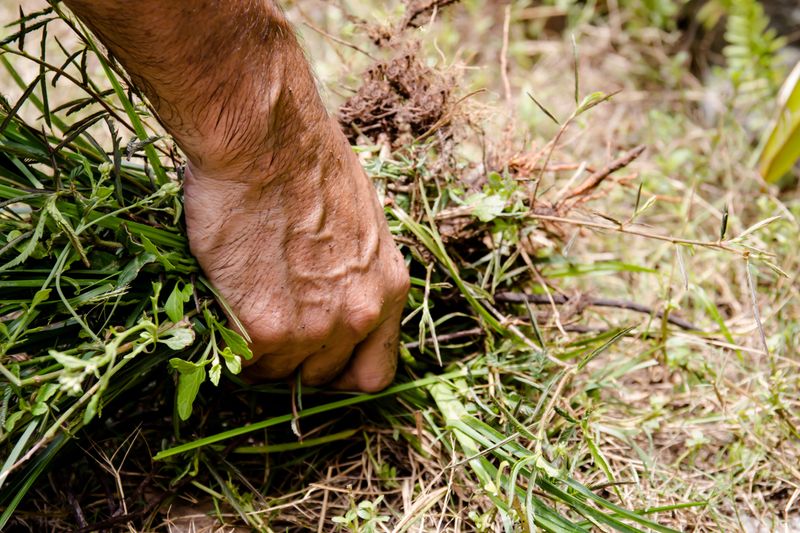
Hand pulling weeds is a classic method that requires no tools other than your own hands. This technique is perfect for small infestations and gives immediate results. It involves gripping the weed close to the ground and pulling gently to remove the root system. While labor-intensive, it’s a chemical-free option that allows you to target specific weeds. It’s also therapeutic for those who enjoy the tactile satisfaction of gardening. Regular maintenance can prevent larger outbreaks.
6. Mulching
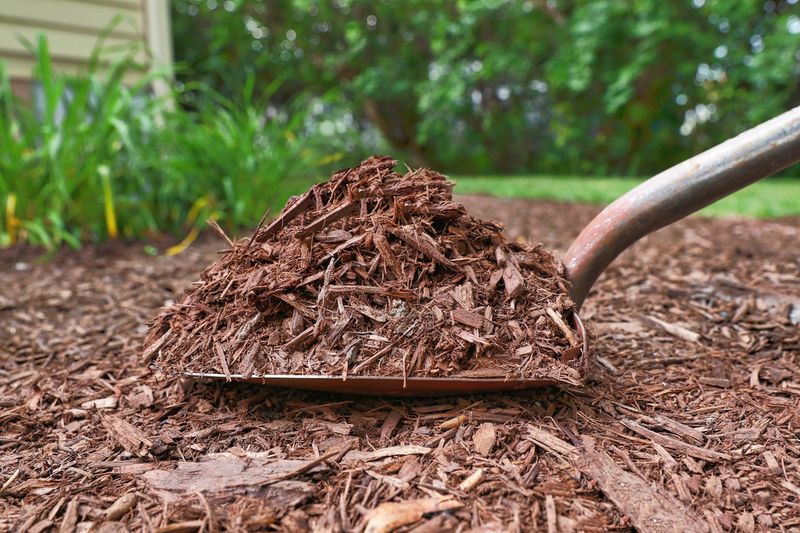
Mulching offers a preventative measure against weed growth. By covering the soil with a layer of organic material such as bark or wood chips, you block sunlight from reaching the weeds, inhibiting their growth. This method is beneficial for larger areas and adds aesthetic value to your landscape. In addition to weed control, mulching helps retain moisture in the soil, promoting healthy plant growth. It’s an environmentally friendly option that enhances the overall look of your garden.
7. Flame Weeding
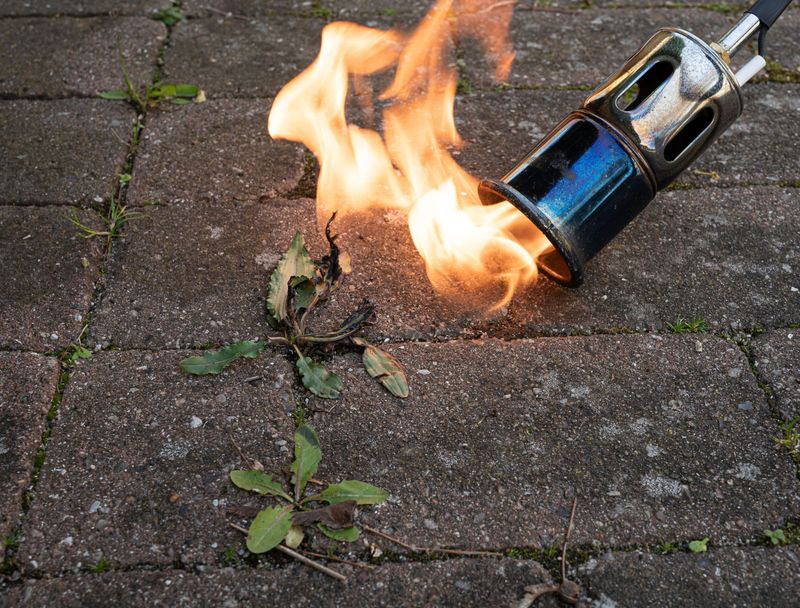
Flame weeding is an innovative technique that involves using a propane torch to kill weeds with heat. The flames cause the plants’ cells to burst, leading to their demise. This method is quick and effective for driveways and walkways. However, it requires caution to prevent fires and should not be used in dry, windy conditions. Protective gear is recommended to ensure safety. Flame weeding offers a chemical-free approach, ideal for eco-conscious gardeners.
8. Herbicide Sprays
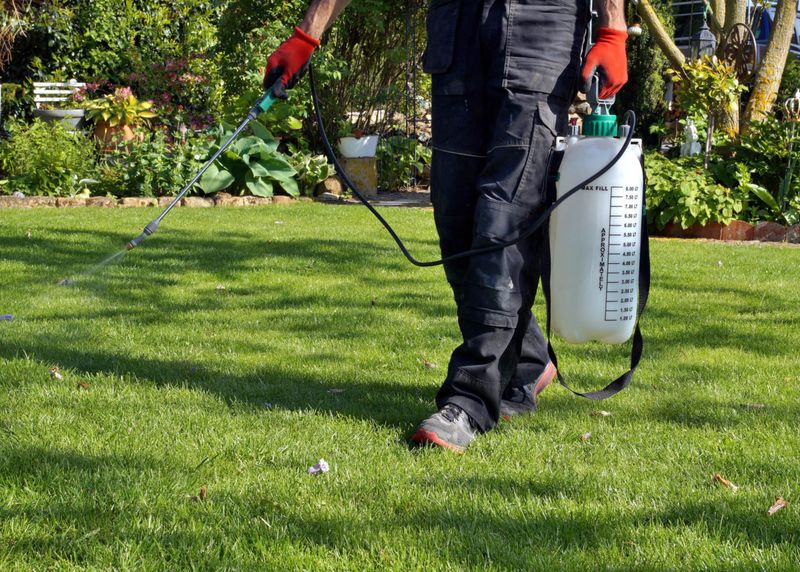
Herbicide sprays provide a powerful solution for weed control. These chemical treatments are designed to target specific weeds, offering a quick and efficient method of removal. When applying, follow the manufacturer’s instructions carefully to ensure safety and effectiveness. Some herbicides are selective, sparing desired plants, while others are non-selective and should be used with caution. Despite the chemical nature, they offer a reliable option for persistent infestations.
9. Corn Gluten Meal
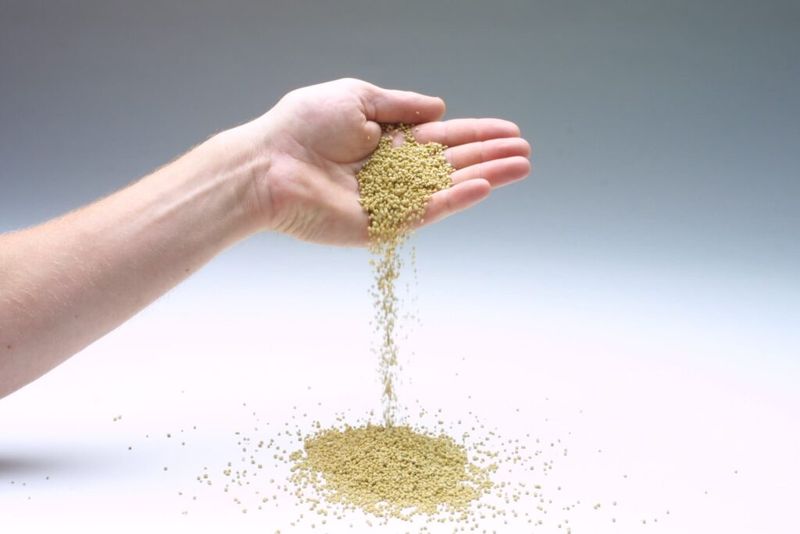
Corn gluten meal acts as a natural pre-emergent herbicide. By applying it to your driveway or walkway, you can prevent weed seeds from germinating. This method is not effective on existing weeds but offers long-term prevention. It’s an organic option that enriches the soil, making it safe for the environment. Regular applications in early spring and fall can keep your pathways weed-free. Corn gluten meal is a sustainable choice for proactive garden care.
10. Landscape Fabric
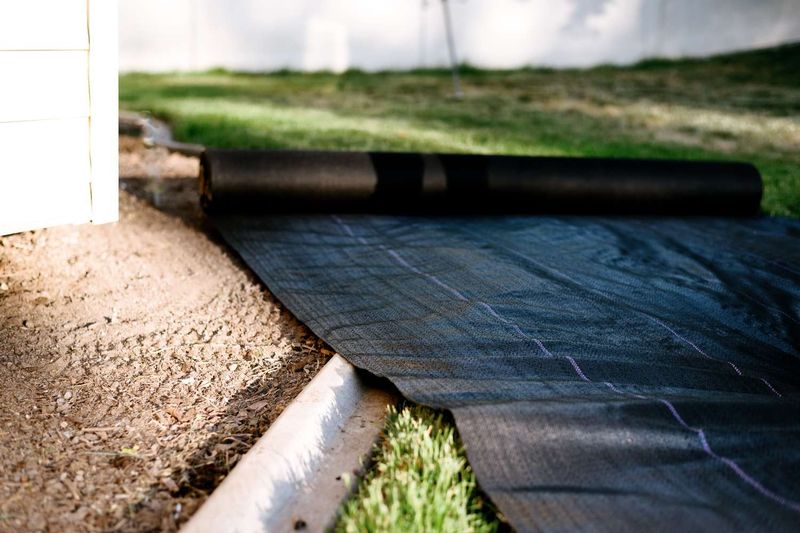
Landscape fabric is an effective barrier against weeds. By laying it over soil, you block sunlight and prevent weed growth. This method is excellent for new garden paths or renovating old ones. The fabric allows water and nutrients to pass through, ensuring healthy soil below. Secure it with landscape staples for best results. While initial setup may require effort, it offers long-term benefits with minimal maintenance. Landscape fabric provides a clean, professional look to your outdoor spaces.
11. Pressure Washing
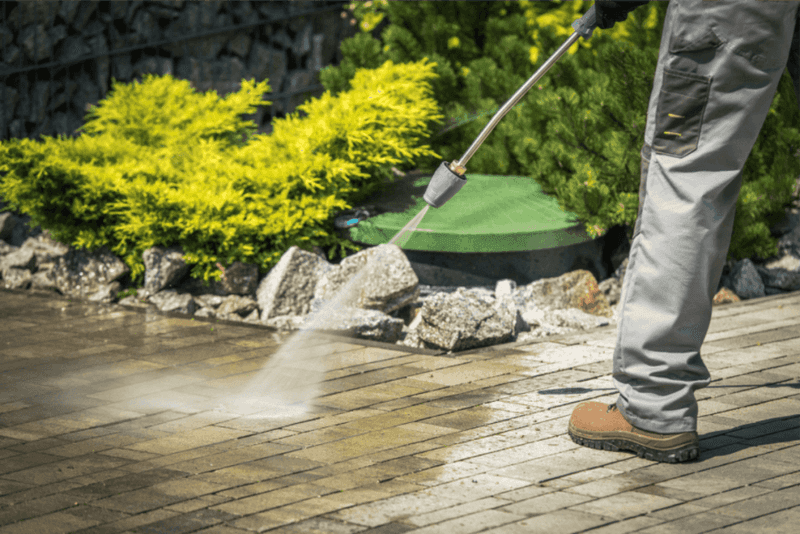
Pressure washing is a dynamic way to deal with weeds. The force of the water can dislodge and remove weeds from driveways and walkways. It’s a non-toxic method that also cleans surfaces of dirt and grime. Use caution to avoid damaging delicate surfaces or nearby plants. Regular pressure washing can maintain the cleanliness of your outdoor areas. This technique combines weed removal with aesthetic improvement, offering dual benefits for homeowners.
12. Solarization
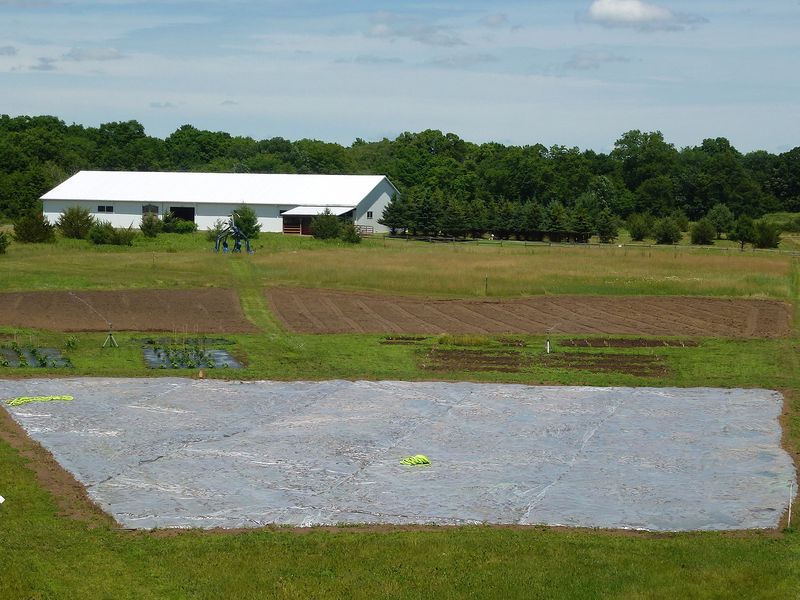
Solarization is an effective method for killing weeds using the sun’s power. By covering the area with clear plastic, you trap heat and raise the soil temperature, killing weed seeds and roots. This technique works best during the hottest months and requires a few weeks to be effective. It’s a chemical-free option that also helps control soil-borne pests. Solarization is ideal for preparing new paths or revitalizing existing ones. This method promotes a healthier environment.

